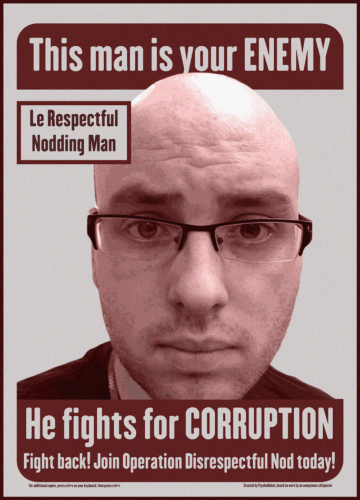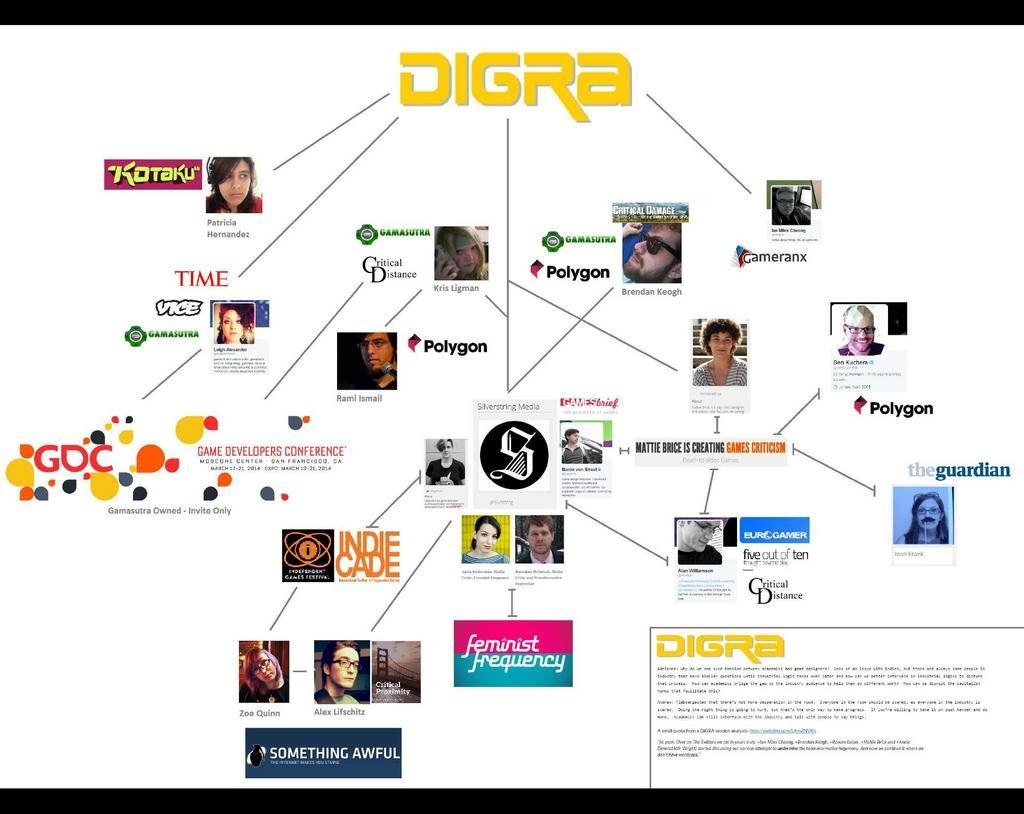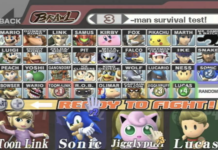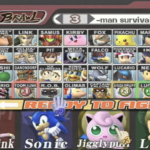What is Gamergate?
This question, five years after the fact, continues to have different answers depending on who you ask. Was it a crusading effort to expose corruption and unethical practices in video game journalism? Was it a scapegoat for the organization of targeted harassment campaigns by online trolls? Was it nothing more than a pressure cooker for reactionary politics? Who was in the right?
Even today, the controversy is viewed through a sort of haze. To do a post-mortem on Gamergate, one must sift through the debris, draw lines between the various points of view and figure out just what exactly was trying to be accomplished; and if it did so adequately.
What Is Gamergate?
There is no clear cut definition of Gamergate, and how one perceives it will depend on which side they’re on. Simply put:
- Gamergate supporters believe that there is corruption in video game journalism; furthermore, that journalism is being used to disseminate a progressive agenda in games.
- Anti-Gamergate supporters believe the pro-Gamergate points are little more than a conspiracy theory, an excuse for online targeted harassment against women in video games.
- Gamergate would become known for the aggressive harassment campaigns from online anonymous “trolls” against several prominent women in the video game industry.
In order to try and draw the formless Gamergate movement, one must go back to where it all began and try to piece it together through the timeline.
Gamergate Beginnings – Zoë Quinn

In 2013, Depression Quest, a text-based game dealing with the subject of depression, was released. Zoë Quinn, the game’s sole developer, submitted the game through Steam’s Greenlight program only to receive large amounts of hate mail and subsequently withdraw the submission. However, after receiving positive reviews from people who had played through the game, they submitted Depression Quest once more and the game was released on Steam in August 2014.
Upon the game’s release, an ex-boyfriend of Quinn’s named Eron Gjoni published a blog post titled “The Zoe Post.” The document provided extensive details of their relationship and breakup, complete with chat logs, texts, emails and various screenshots.
In this post, Gjoni outlines a potential conflict of interest between Quinn and Kotaku journalist Nathan Grayson; Grayson had written two articles, one in January and one in March, which gave a spotlight to Quinn’s Depression Quest and the two were considered friends. Furthermore, Gjoni alleged that while Quinn and he were on a break from their relationship between March and June, Quinn and Grayson had engaged in their own relationship, implying a direct conflict of interest (Gjoni would later amend this claim, saying it was between May and June.)
The Zoe Post was linked on 4chan, a hub where many who were highly critical of Depression Quest gathered, birthing what became known as the “Quinnspiracy” which began a series of direct harassment campaigns against Quinn and their family; doxxing, graphic threats depicting death and rape, and harassing phone calls to Quinn and family members that were coordinated through 4chan and Reddit. Boston Magazine reported that before The Zoe Post, Quinn had saved 16 megabytes of documented harassment; this number had grown to 16 gigabytes four months after Gjoni’s blog.
Anita Sarkeesian And The #GamerGate Objectives

Around the same time that Depressed Quest dropped and The Zoe Post was published, Anita Sarkeesian released the second part of a two-part video for her Tropes vs. Women in Video Games series. Sarkeesian is a known media critic and feminist who rose to fame in 2012 when her campaign to fund Tropes vs. Women in Video Games drew both large donations from supporters as well as harassment from her detractors. This made Sarkeesian a leading figure in dialogue surrounding misogyny in video games.
The video titled “Women as Background Decoration” coincided with Gjoni’s blog post and would be the starting point of the “pro-Gamergate” stance: that video game journalism had become a corrupt enterprise with multiple conflicts of interest and industry-wide bias that all served to push a progressive agenda. Rather than the coverage of video games being powered by journalistic integrity, there was a growing sense that “SJWs” (social justice warriors) were pushing the press narrative.
As games rely on good press to increase their visibility and sales, if the press were pushing a more progressive agenda, Gamergate supporters worried that the progressive politics would start to influence the very games that were being played and would lead to censorship against ideas and speech that stood against these progressive viewpoints. All of these combined for what would become the “Three C’s of Gamergate” (a play on the “Three C’s Of Game Design”)
- Collusion
- Corruption
- Censorship
The goals of the movement, while never explicit and often times shifting, were to demand full disclosure of the relationships between news outlets and game developers and an ethics reform to ensure that the quality of both the press coverage and game development were not compromised. There were coordinated efforts to expose unethical publications which were called “operations.” An example of one of these operations would be “Operation Disrespectful Nod” in which Gamergate supporters would email ad companies with evidence of unethical journalism so that the ad companies would pull their ads from the site.

Despite these operations, there were no appointed leaders of GamerGate; rather, several content creators would become figureheads for raising awareness of the Gamergate situation, and even grow outside of the movement into various social and political circles.
Sargon Of Akkad, Milo Yiannopolous, And The Case For #GamerGate
The Gamergate controversy became a boosting point for several public figures such as Carl “Sargon of Akkad” Benjamin and Milo Yiannopolous. Other YouTubers, such as Steven “Boogie288” Williams and the late John “TotalBiscuit” Bain agreed that the issues raised by the pro-Gamergate side were legitimate and needed to be addressed.

Milo Yiannopolous had only recently begun working at Breitbart and he would emerge as one of the largest voices for Gamergate supporters. While not a video game enthusiast (indeed, he even admitted to mocking video games and gamers in general) he would publish 10 articles on Breitbart between September and November, covering the ongoing controversy and providing his own commentary on the situation. The flamboyant provocateur with his unapologetic takes laid the groundwork for when he would become one of the most notable faces of the alt-right.
Perhaps Milo’s biggest contribution to the Gamergate controversy was the publishing of the GameJournosPro list, a now-defunct Google group featuring over 150 writers, editors and bloggers from various news and media outlets. Milo also featured various leaked email conversations from members on the list who discussed the Quinn situation, whether or not to cover the story, and the idea of a public letter of support for Quinn signed by members of the gaming press. These emails and the list, coupled with a series of articles from news outlets condemning gamers (called “Gamers Are Dead” within the Gamergate community) added more fuel to the fire that there was indeed collusion, corruption and censorship within the gaming journalism circles. Milo would also host a podcast called Radio Nero that discussed the issue several times with guests such as Sargon of Akkad, Christina Hoff Sommers, and Adam Baldwin (note: Adam Baldwin was the one who coined the hashtag “#GamerGate.”)
The other main figure who rose to fame during this time was Sargon of Akkad, a YouTuber who is known to discuss social, historical and political topics on his channel. Sargon brought his own contribution to the pro-Gamergate side with researched videos on the Digital Games Research Association (DiGRA) with the focal point being that the academic work and research being done by the institution was being co-opted by feminists.
Sargon’s video “How DiGRA Caused The End Of Gamers, #GamerGate, and #NotYourShield” was perhaps the strongest summation of the pro-Gamergate stance up to this point, by pointing out that Adrienne Shaw, a feminist game studies scholar known for her work in queer theory and LGBTQ representation in video games, had close connections with the head of DiGRA Mia Consalvo through various research projects. DiGRA itself was linked in a discussion group to Silverstring Media, a media company which featured Anita Sarkeesian as an advisor. These projects were cited in a blogpost by Dan Golding on Tumblr, which in turn was quoted in several different articles all posted on August 28th, 2014. The connections between various researchers and public figures was claimed to be an ideologically driven move (i.e the progressive viewpoint) and the articles by various outlets during the 28th were claimed to be a coordinated effort.
Corruption. Collusion. Censorship.
The Difficulty Of Discourse

If there’s any similarity between 2014 and today, it’s that the mob muddies the water. The angry brigades of anonymous users made it difficult to establish a dialogue between the Gamergate supporters and their detractors. Public figures such as TotalBiscuit and Sargon of Akkad repeatedly told their respective audiences to not harass or even contact anybody mentioned in their content, while also criticizing the media for making GamerGate about the vitriol of the trolls rather than the concerns of ethics in gaming journalism; this is where the hashtag “#NotYourShield” came about, where minorities who supported Gamergate criticizing the media for using their identities to further their agenda.
The actions of the pro-Gamergate trolls made things go from bad to worse; in October 2014, Brianna Wu posted several tweets critical of Gamergate, which led to another series of doxxing, rape and death threats, and emails of mutilated dogs after it was found out that her dog had recently died. Anti-Gamergate trolls also made their mark, issuing a bomb threat at an event where both Milo Yiannopolous and Christina Hoff Sommers were in attendance. Both Boogie2988 and TotalBiscuit declared that they had received death threats via emails and YouTube comments.
The large amount of targeted harassment from alleged Gamergate supporters effectively poisoned the well; when central figures in a controversy are bombarded with thousands of threats, and forced to move elsewhere and live under different aliases, it becomes impossible to have a constructive discussion. By January 2015, much of the hysteria surrounding the controversy had begun to die down, although various events would allude to the controversy up until 2017. Still, one question still remained:
Was there any validity to Gamergate?
The Truth Behind Gamergate
The issues raised by Gamergate supporters are not trivial, as corruption within our institutions must be addressed. Gamergate would be defined by the online harassment campaigns while the key points were misguided at best and conspiracy theories that fueled the anonymous attacks at worst.

To start, we must go back to the beginning, Gjoni’s blog post. As stated, he initially wrote that Grayson and Quinn had a relationship from March to June, and Grayson had written two articles featuring Quinn’s Depression Quest with at least one lining up in March. This would’ve been a jumping off point for a conflict of interest between a game reviewer and a developer except for two major mistakes:
- Grayson never wrote a “review” for Depression Quest, he only mentioned it as examples in two different articles.
- Gjoni admitted that Grayson and Quinn’s relationship was from May to June; which places the publishing of these articles outside the relationship window
But virality is a powerful thing, and the blog post had already begun making the rounds. Quinnspiracy got the idea baked into people’s heads that developers and journalists were in bed with each other (both literally and figuratively) and by the time Gjoni owned up to making a mistake, the issue had exploded.
The GameJournosPro list published by Milo Yiannopolous featuring writers not only from the video game industry, but also broader tech media, was another point put forward towards collusion between various groups of interest. The group was alleged to be a place where influential figures in the industry could work together to drive the media narrative. The creation of these groups is commonplace in online publishing. Outside of conferences and conventions, these exist as hubs for networking and discussing anything of professional interest (it’s quite common for competing publishers to even be in the same groups.) Such practices are more common in “lifestyle journalism” rather than classic journalism, and video game journalism has generally been classified more as the former. This may seem like evidence of industry-wide collusion to outsiders, but genuine collusion requires proof of the act. And the proof cited was a few messages by Kyle Orland talking about the Zoe Quinn situation, where he was rebuked by fellow journalists within that group and subsequently published an apology.
The 10 articles on the Quinnspiracy topic published on August 28th were also used as evidence of industry-wide collusion, often combined with GameJournosPro. This demonstrates a lack of understanding on how these outlets work: if a story or topic (especially one that’s been trending) has been covered in one outlet, it will be replicated across multiple outlets in the same sphere. This is important for publishers to do quickly because it allows them to reap the online search traffic, provide their own take or additional information to the story, and overall maintain credibility as a source that covers the hottest issues of the day. The goal of an online publisher is to get traffic; a recent example would be articles by The Jerusalem Post and ESTNN, who did everything they could to connect Kobe Bryant and their brand so they could capitalize on the search traffic after his death. The 10 articles were more evidence for greed than collusion.
It is also interesting to note that of the 10 authors of the August 28th articles, only two of them were in the GameJournosPro group despite the claim by Sargon of Akkad that this mass-publishing was likely organized via the group.

But these points only stick if there’s a narrative to tie them together, which begs the question: what is the narrative? As stated before, Gamergate supporters believe that a progressive ideology is being forced into the medium through unethical journalistic practices.
The mass publication of articles condemned “gamers” and it’s here where a crucial distinction needed to be made: the definition of “gamer” is never uniform between groups. Indeed, the two different views of “gamer” were:
- “Gamers” as a certain identity; a hardcore player who’s identity is tied to the online community and the mutual jokes, memes and social circles that are formed through this identity.
- Gamers as a demographic; people who view gaming as a hobby of theirs, or have simply played games. This is the definition that Christina Hoff Sommers would use in her Gamergate videos.
The demographic used in the statistics cited by Sommers does not overlap with the identity of “gamer” as pointed out by Adrienne Shaw in her paper. Everyone featured in the study would qualify under Sommers’ assessment of gamer, yet the interviewees’ self-identification as “gamers” relied on factors outside of pure consumption. This distinction was lost in translation during Gamergate.
And this distinction was crucial, since the claim of the gamer identity being primarily white, young heterosexual men was then used as a broad, sweeping label which the pro-Gamergate side interpreted as generic and false. Obviously, not every single person who identifies as a gamer is a straight white male, and this kind of rhetoric only pushed to confirm suspicions and conspiracies of a concentrated ideological push in the media. On the other hand, pro-Gamergate were keen to delegitimize the threats directed towards Quinn, Sarkeesian and Wu even after the FBI had confirmed several of them to be real.

Furthermore, the attempt to paint DiGRA as a corrupted institution meant to give academic legitimacy to the progressive agenda did more to show a lack of understanding of the pro-Gamergate side of how academia and the peer-review process works than any genuine corruption. Peer review is less about adding to or building on the contents of the paper; peer review is about quality checking the research methodology and procedures, and to make sure that all sources used are both legitimate and sourced in context. There are real criticisms of the process, but that does not make the process inherently corrupt, nor invalidate the contents of any particular study.
Connecting DiGRA with Silverstring, game developer conferences, and journalists was an attempt to connect the various dots and show the collusion, corruption and deception across multiple institutions, rather than realizing that this is how the system works. Let’s take climate change for example: scientists from various fields will submit peer-reviewed studies which gives us accumulative data. This data is then used not only by scientists, but also activists, politicians, and entrepreneurs in how they approach their respective goals. One can criticize these institutions but again, that does not make the institutions nor their actions corrupt.
Bless your heart if you’ve made it this far. Gamergate’s professed intentions were noble; holding our institutions accountable and to standard is a worthwhile cause. Unfortunately, the foundations for these intentions were scattershot, and the movement desperately looked for smoke to call fire. The points only connected on an a priori assertion about feminism invading the video game world; none it held up outside that foundational belief. Instead, the absolute hostility coming from the online mob immediately poisoned the well, preventing any productive conversation. Perhaps a case could be made for ethics in video game journalism, but that case was not made here.
If you feel there are inaccuracies, missed points, or would just like to discuss the topic further, please email me at colinnorthgg@gmail.com











